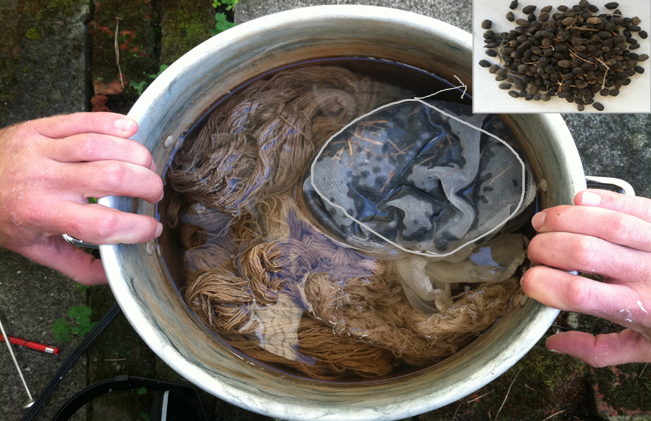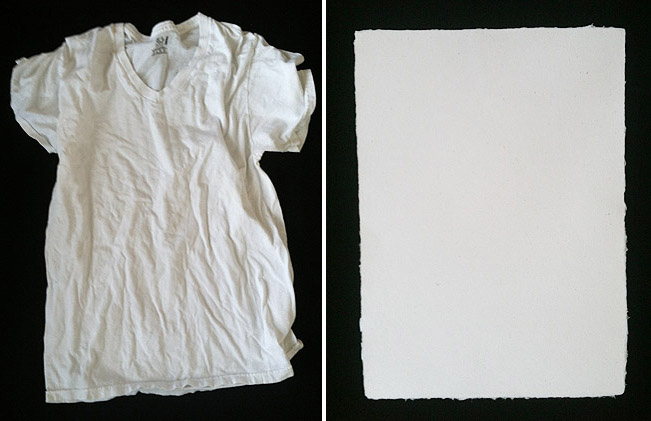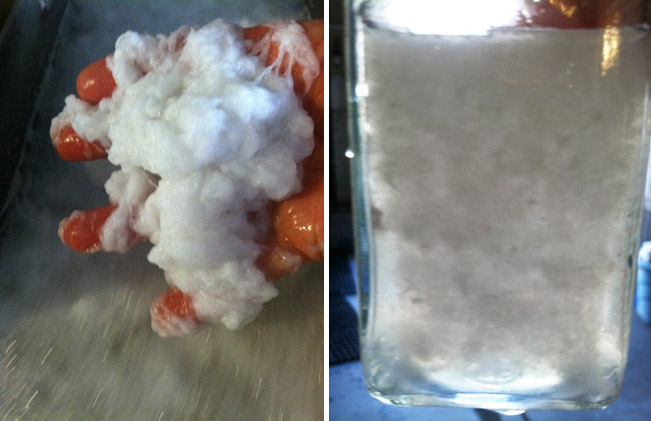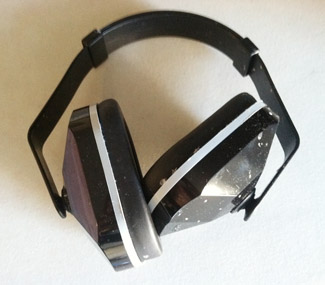Levi’s: Edible Schoolyard
Edible Schoolyard Kids make a book with BANDmade Books founder Pam DeLuco
Posted by BANDmade Books on August 27th, 2010facebook
Edible Schoolyard Kids make a book with BANDmade Books founder Pam DeLuco
Posted by BANDmade Books on August 27th, 2010facebook
Watch BANDmade Book’s founder Pam DeLuco make paper from jeans.
Posted by BANDmade Books on June 21st, 2011facebook
BANDmade Books founder, Pam DeLuco, presented an amazing project at this year’s Maker Faire Bay Area, allowing guests to “set their status” in lead type. The blog Felt & Wire wrote up a great blog post about her booth.
Posted by BANDmade Books on June 23rd, 2011facebook
Felt & Wire interviewed BANDmade Books founder Pam DeLuco on the subject of making paper out of rags
Posted by BANDmade Books on July 27th, 2011facebook
Felt & Wire wrote a piece on the Shape What’s to Come journals made by BANDmade Books founder Pam DeLuco
Posted by BANDmade Books on August 27th, 2011facebook

The next BANDmade Books collaboration is with the band OK Go. We are all really excited to work with such a creative group who is certain to push the paper envelope.
And speaking of paper, we’re making the text pages for their book out of their fan’s clothes and we want yours! If you’d like to contribute here’s what to do:
1) Round up all your old White 100% cotton, hemp or linen: shirts, pants, linens (bedsheets, table cloths, etc.). We are looking for white but we understand that old white isn’t always super white–that’s ok. Don’t worry if your shirt has a colored image on it. As long as the rest of the shirt is white we can accept it.
2) Notice how we didn’t ask for your socks or underwear. That was intentional.
3) Look at all the tags and make sure they are 100% cotton, hemp, or linen (or a blend of these fibers). We cannot accept any fibers other than cotton, hemp, or linen so if there’s no tag please don’t send it to us. 5% lycra is not acceptable. It’s all or nothing with rag paper.
4) Box up what you have and mail it to:
BANDmade Books
1090 Eddy Street #104
San Francisco, CA 94109
5) Check back here to see what happens with your clothes!
Posted by BANDmade Books on September 1st, 2011facebook
The folks at the Maker Faire made a great video on typefacebook. Check it out!
Posted by BANDmade Books on October 27th, 2011facebook
 |
We were very pleased when we learned that April Winchell, creator of the popular website Regretsy, was writing a book to fund a Kickstarter grant. Since books are our thing, we offered to make a limited edition to help support her cause. |
The fiber for the cover paper came from two sources:

April Winchel's caftan (left) and Gabe Nelson's futon (right) provide the fiber used to make the covers for the Regretsy book.
 |
It felt a bit wrong to cut up April’s caftan but we did our best to use only the back. Paper is made out of cellulose fibers. April’s caftan is definitely not made of cellulose so we had to use it sparingly or it would interrupt the hydrogen bond and make floppy paper. We can’t have floppy paper. |
| The futon fiber and caftan are processed into pulp using a hollander beater. We added the pigments at the end of the beating cycle. Several colors were combined to achieve the final color. |  |

A mould and deckle (right) are used to form the sheets of paper.
We formed the sheets one at a time using a mould and deckle and transferred them onto pieces of pellon. The process of transferring the paper off the mould is called ‘couching’ (pronounced cooch-ing). Another pellon is placed on top of the newly formed sheet and the next one is couched on top of that. The stack of formed sheets, called a post, is put in a hydraulic press to remove the water. The sheets are dried and then cut down to size for printing.

Goudy text (left) and a custom magnesium die (right) were used to print the covers.
We set the type by hand, placing each letter, one by one, into the form. We had a magnesium die made using artwork designed by John Foley (aka: Bronc Drywall).

Pam printing the front covers on a C&P.
Our friends at Playland Press let us use their treadle powered Chadlier & Price printing press to print the covers.
We used a hand-spun, hand-dyed thread to bind the books:

Pam spinning hemp singles on her spinning wheel (left) and the finished yarn (right).
Before we dyed the yarn we had to soak it in a mordant, a substance used to help the dye adhere to the fiber. The mordanting process was very involved and required an interesting step: a soak in sheep dung.

Binding thread simmering in a sheep dung fixing solution.
The excess mordant needs to be freed from the fiber otherwise the dye will simply bind to the mordant and wash away. This is where the sheep dung comes in. Dung from sheep and cattle contains sodium and calcium phosphates and was used for centuries for this purpose. Oh sure, we could use powdered chalk instead but why would we when we can use actual dung?
 Dried madder root. |
We dyed the spun thread with natural madder root. This is also a rather involved process and took several days and repeated dye baths. |
| Wala! The finished thread waxed with beeswax from Pam’s San Francisco beehive. |  |

Pam and Drew bind the books.
Drew punched the holes for the binding using an awl and Pam sewed all the books.
Posted by BANDmade Books on December 29th, 2011facebook

Step 1: making the pulp

Thanks to everyone who sent in their old clothing!
The first step is to remove all buttons, zippers, fasteners, and tags. The tags are not cotton and the other items will damage the beater.
Next, the clothing is cut into small pieces and soaked in water.

2 lb. Hollander Beater
The cut rag is placed into a machine called a hollander beater and filled with water. This beater can process up to 2 lbs of cut rag at a time.

Ever wonder if you put enough soap in your laundry?
Let’s take a look under the hood:

The roll (left) has a series of metal fly bars. Underneath the roll is a bed plate which has another set of metal bars. Turning the hand crank (right) lowers the roll and shortens the distance between the fly bars and the bed plate. As the fiber passes through this area it is beaten into pulp.

In about 15 minutes or so the fiber no longer resembles cloth. The final test is to put a bit of the pulp in a jar and add some water. Shaking the jar and holding it up to the light shows if there are any clumps or long fibers.
| It takes about 30-45 minutes to process a load of clothing into pulp. It’s pretty loud so we need to wear these earphones to protect our ears.We’re getting approximately 25 sheets/lb and each t-shirt weighs about 3/4 lb. We need at least 3200 sheets for the edition. That’s a lot of pulp! |  |
It’s not too late to send in your clothing! If you’d like to have us add your whites to the mix please follow these instructions.
Posted by BANDmade Books on January 9th, 2012facebook
Step 2: making the sheets

A mould (screened piece) and deckle (frame) is used to form the sheets.
Papermaking is a very wet process so we wear plastic aprons and rubber boots.

The vat is filled with pulp and water and mixed by hand. This is called hogging the vat.
The mould and deckle is dipped into the vat at an angle and pulled straight up.

Giving the mould a couple front-back/side-side shakes evenly settles the fibers as the water drains.

Sheets waiting to be couched.
Couching (pronounced cooching) is the process of transferring the sheet off the mould.

Left: the deckle is removed and the mould is lined up so the new sheet will lie directly on top of the one below, separated by a piece of interfacing.
Right: even pressure is put on the mould to get the sheet to release.

The mould is peeled back leaving the newly formed sheet behind. A piece of interfacing is placed on top of the sheet and the process is repeated.
Traditionally, felt is used but we wanted a smooth paper so we used interfacing.

The stack of formed sheets (called a post) is put in a hydraulic press to remove the excess water.
Pressed sheets are carefully placed into a drying box which consists of a layers separated by a channeling system where the air can pass through (bottom right). The two sides are sealed and a fan is set to pull air from the open side. The top is held down with ratchet straps so the paper can dry under pressure, creating perfectly flat sheets.
It takes about 8-10 hours for the paper to completely dry.
 |
The dry sheets are checked for consistency and then placed under tension to cure. Paper should cure for at least a year if it’s to be used for text pages. We put the paper in small stacks of 100 with a board in-between every 500 sheets to help distribute the pressure.We made over 4000 sheets for the text pages.
It took a long time. |
Posted by BANDmade Books on May 24th, 2012facebook